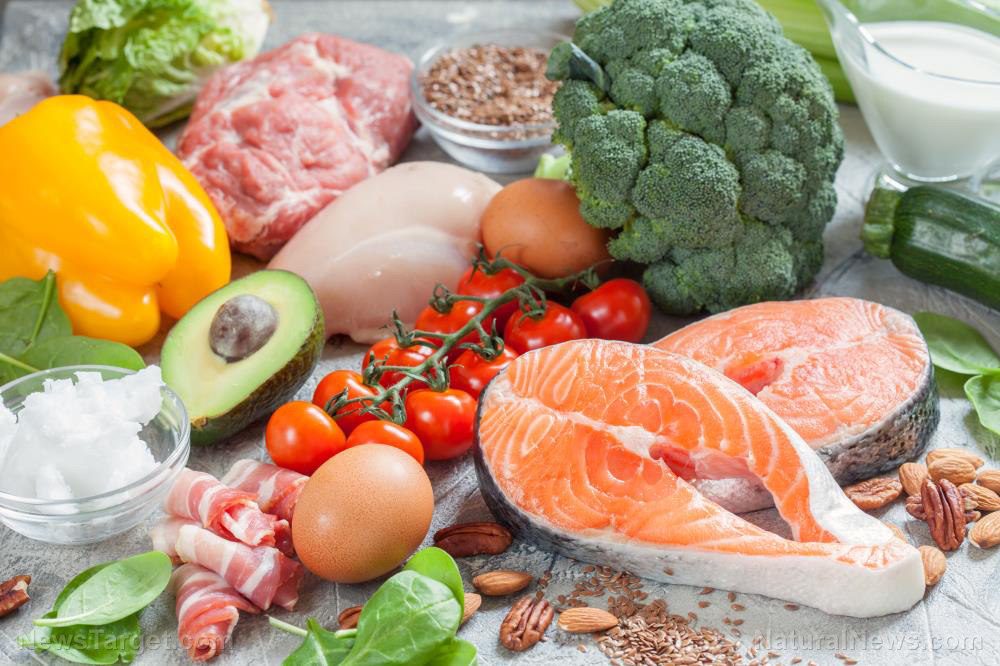PROVEN: Scientists say a high-fat diet is nutritionally poor and raises the likelihood of disease
06/08/2018 / By Ralph Flores

High-fat diets are, without a doubt, full of flavor – but that’s all it has going for it. A study published in the Journal of Nutrition & Intermediary Metabolism had indicated that a high-fat simple carbohydrate diet (HFSC) can lead to structural abnormalities in a person’s vital organs. The findings, presented by researchers from St. Aloysius College and the Central Food Technological Research Institute in India, looked at the effects of a realistic HFSC diet has on the body including its nutritional profile.
The rise of nutritionally poor food
According to researchers, the lack of time, stress, and increased per capita income are contributing factors to the uptick in consumption of these so-called nutritionally poor foods, more commonly known as junk food.
Some unique selling points that junk food have are that they’re ridiculously cheap and easy to eat, making them a go-to for people who think they have no time for a nutritious, but time-consuming, meal. However, multiple studies have shown that the increased availability of junk food, together with processed food and sweetened beverages, is closely tied to the rapid increase in obesity rates in recent years.
In the study, the researchers point out that aside from obesity, excessive consumption of these types of food can also lead to insulin resistance (a precursor for diabetes) and dyslipidemia (abnormal amount of lipids in the blood). These two factors, in particular, are what comprises a metabolic syndrome – a condition which increases the risk of cardiovascular disease and diabetes. While there have been several diet-based studies that evaluated metabolic syndrome, researchers believe that these did not have adequate information on the nutrient profile of the feeds that were given in in vivo tests after it was prepared. (Related: Artificial sweeteners linked to metabolic syndrome; increases diabetes risk by up to 500%.)
The power of the elements: Discover Colloidal Silver Mouthwash with quality, natural ingredients like Sangre de Drago sap, black walnut hulls, menthol crystals and more. Zero artificial sweeteners, colors or alcohol. Learn more at the Health Ranger Store and help support this news site.
How does an HFSC diet affect the body?
For the study, researchers developed their own HFSC diet patterned after things commonly found in fast food items – which are high in sugars (such as high-fructose corn syrup), simple carbohydrates, sodium, and other chemicals. This allowed them to look at how it affects the target organs that they identified.
The researchers prepared two sets of feeds for the study. The control feed contained roasted wheat flour and infant formula, while the HFSC feed had lard, melted sugar, cornstarch, and infant formula mixed in. Before the feeds were administered, these were first analyzed to identify their macro- and micronutrient profile. These were then given to mice for five months, with the team monitoring their feed intake, energy intake, and feed efficiency. At the end of the study, the team analyzed the effects of each diet on the mice’s kidneys, adrenal gland, and pancreas, using a process called histological staining, that is, coloring cells with artificial dyes to examine tissues better.
The findings revealed that the HFSC feed had nearly twice the amount of calories than the regular feed, with fat being the highest source of calories. In addition, HFSC-fed mice were found to have increased triglyceride levels, which is a risk factor for cardiovascular disease. They also had a higher ratio of omega-6 and omega-3 fatty acids, which can increase the likelihood of blood clot formation, as well as plaque buildup in the arteries.
The nutrient content of HFSC-fed mice was also lower. Dietary minerals such as zinc, iron, manganese, and magnesium were found to be deficient in the mice, which opens up the risk of altered carbohydrate metabolism and glucose tolerance. However, they had elevated levels of sodium and potassium – two minerals closely linked to hypertension in humans.
During the study, the mice had developed hyperphagia (excessive hunger), which led to the accumulation of fat in their body. The fat also accumulated in the liver, which exhibited signs similar to non-alcoholic fatty liver disease, and the adrenal medulla, causing an abnormal increase. The HFSC diet also led to the degeneration of the islets of the pancreas.
Based on the results, the researchers concluded that the HFSC diet not only decreases the levels of fiber, “good fats,” vitamins, and minerals, but when it is compounded with stress and poor lifestyle choices, it can lead to complications such as metabolic syndrome and the deterioration of many vital organs.
Sources include:
Tagged Under: baddiets, cardiovascular disease, Diets, fast food, fatty acids, food, food science, heart health, HFSC, high calories, High Fat, high-fat simple carbohydrate diet, kidney health, metabolic syndrome, metabolism, nutrition, obese, obesity, obesity treatment, omega 3, Omega-6, overweight, simple carbohydrates, weight loss, weight management



















